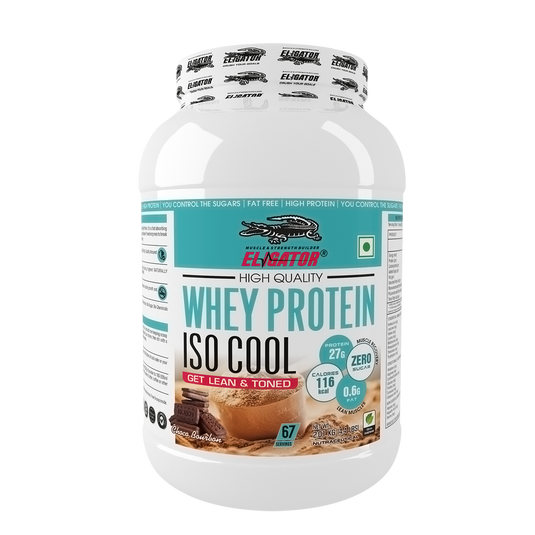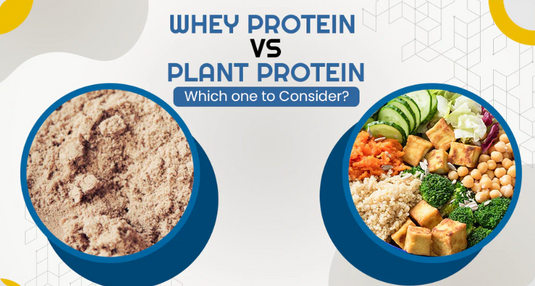Introduction
Smoothies have long been hailed as a convenient, delicious way to pack a variety of nutrients into one easy-to-consume beverage. They're particularly popular among fitness enthusiasts who believe they're getting a potent mix of vitamins, minerals, and other beneficial compounds. But is there a darker side to this seemingly healthy habit? Could your beloved morning smoothie be sabotaging your muscle gains? Let’s dive deep into the science and uncover the hidden truths.
The Sugar Bomb in Disguise
One of the most significant issues with many fruit-based smoothies is their high sugar content. Fruits, while natural, contain fructose, a type of sugar that can wreak havoc when consumed in excess. For example, a typical smoothie made with bananas, strawberries, and mango can easily pack in over 50 grams of sugar—equivalent to drinking a can of soda!
Fact: According to the American Heart Association, men should consume no more than 36 grams of added sugar per day, and women should limit it to 25 grams. While fruit sugars are natural, their effect on blood sugar levels is similar to added sugars when consumed in large quantities.
Example: Consider John, an avid gym-goer who starts his day with a smoothie made from two bananas, a cup of strawberries, and a handful of spinach, blended with a cup of orange juice. While he believes he's making a healthy choice, his smoothie contains approximately 60 grams of sugar. This high sugar load can spike insulin levels, leading to fat storage rather than muscle building.
Insulin Spikes and Fat Storage
When you consume a high-sugar smoothie, your blood sugar levels spike, prompting your pancreas to release insulin. Insulin is a hormone that helps cells absorb glucose for energy. However, frequent spikes can lead to insulin resistance, where your cells become less responsive to insulin. This condition is a precursor to type 2 diabetes and can hinder your body's ability to build muscle effectively.
Fact: A study published in the journal Diabetes Care found that individuals with higher insulin sensitivity had a greater capacity for muscle growth compared to those with insulin resistance.
Example: Emma, a fitness enthusiast, notices that despite her rigorous workout routine and daily smoothies, she struggles to lose belly fat and gain muscle. Upon consulting a nutritionist, she learns that her high-fructose smoothies may be contributing to insulin resistance, explaining her difficulty in achieving her fitness goals.
The Fiber Fallacy
While fruits are a good source of fiber, the blending process in smoothies often breaks down this fiber, reducing its effectiveness. Fiber is crucial for slowing down the absorption of sugar and maintaining stable blood sugar levels. Without sufficient fiber, the sugar in your smoothie is absorbed rapidly, leading to the aforementioned insulin spikes.
Fact: The Journal of Nutrition highlights that fiber intake is essential for metabolic health and can aid in muscle recovery and growth.
Example: Sarah switches from whole fruits to smoothies to save time. However, she starts experiencing energy crashes and feels less satiated. She realizes that the fiber breakdown in her smoothies might be the reason behind her fluctuating energy levels and persistent hunger, which can negatively impact her workout performance.
Lack of Protein
Muscle growth requires protein, and many fruit smoothies are deficient in this macronutrient. While some people add protein powder to their smoothies, it often isn't enough to counterbalance the high sugar content. Without adequate protein, your body lacks the necessary building blocks to repair and grow muscle tissue.
Fact: The Recommended Dietary Allowance (RDA) for protein is 0.8 grams per kilogram of body weight, but athletes and those engaging in regular strength training may need up to 1.6-2.2 grams per kilogram.
Example: Mark diligently drinks a fruit smoothie post-workout, believing it's aiding his recovery. Yet, he fails to see significant muscle gains. After adjusting his smoothie to include more protein sources like Greek yogurt or protein powder while reducing fruit content, he notices a marked improvement in his muscle recovery and growth.
Hidden Calories and Weight Gain
Smoothies can be deceptively high in calories, especially when loaded with fruits, honey, or other sweeteners. While these calories are not inherently bad, consuming them in liquid form doesn't trigger the same satiety signals as solid food. This can lead to overconsumption and unintentional weight gain, counteracting your fitness efforts.
Fact: A study in the journal Appetite found that liquid calories are less filling than solid calories, leading individuals to consume more throughout the day.
Example: Jane, aiming to lose weight, replaces breakfast with a large fruit smoothie. She finds herself snacking more and struggling with hunger. By switching to a balanced breakfast with solid foods, she better controls her calorie intake and achieves her weight loss goals.
Conclusion: The Balanced Approach
While fruit smoothies can be a part of a healthy diet, they should be consumed with caution, especially if you're focused on muscle gain. To avoid the pitfalls:
- Limit high-sugar fruits: Opt for low-sugar fruits like berries and add vegetables like spinach or kale to increase nutrient density without the sugar spike.
- Add protein: Ensure your smoothie includes a good source of protein, whether from protein powder, Greek yogurt, or nut butter.
- Include healthy fats: Avocado, chia seeds, or flax seeds can provide essential fats that help slow sugar absorption and keep you full longer.
- Watch portion sizes: Be mindful of the overall calorie content and consider smoothies as a part of your total daily intake, not an addition.
By making these adjustments, you can enjoy your smoothies without compromising your muscle gains or overall health. Remember, moderation and balance are key to any successful diet and fitness regimen.




Receive the Blog via Email Daily
Please fill out the form below and we’ll get back to you within 24 hours.




















